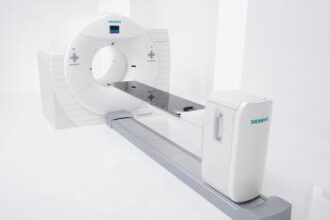On July 29 an expert panel assembled by the Institute of Medicine found that the current regulatory framework for “substantially equivalent” devices (known as the FDA 510K process) was flawed and called for it to be replaced with a system better designed to protect the public’s health. The findings have some merit, but the recommendations have the potential to substantially decrease innovation at a time when more, rather than less, innovation is required to increase the quality and reduce the cost of health care in the US.
It should be noted that the current 510K system is for “moderate risk” devices only. The creation of an artificial kidney, for instance, would be viewed as a “high risk” device. and would be required to undergo exhaustive human clinical trials to be granted approval by the FDA. An endoscope with a better optical camera enabling it to find more anomalies during an endoscopic procedure is considered “moderate risk” and requires that the manufacturer show that the device is “substantially equivalent” to existing products in the market.
But the process doesn’t stop there. Companies are required to follow very detailed processes once a product is approved to show that their product is compliant with FDA regulations. These processes require a company to register all customer complaints and show that they have a process for dealing with them. Additionally, any claims of injury of a patient by the device need to be immediately brought to the attention of the FDA. There is a final “stick” used by the FDA that makes willful acts of omission about the safety of a device a criminal penalty, with the CEO of the company being personally liable.
Further, good physicians don’t just gravitate to new products unless there is a substantial body of evidence to show the product has clinical utility. This comes from clinical trials by the physician community. While some notable companies have abused this practice by paying physicians to promote their products, this is the exception, not the rule. Recent disclosure practices, required by professional societies and academic institutions, are working to root out the problem. This practice, however, is independent of what process the device goes through to obtain approval.
The biggest unintended consequence of overhauling the current 510K process is its effect on investment in the industry. Investment firms (and investment committees in large corporations) usually look at four types of risk –market, technical, regulatory and reimbursement– before deciding to make investments. Obviously, the first two are independent of regulatory requirements. The last two, however, are actually related.
A new device that is required to go through full clinical trials (known as a “PMA”) can often require $50 million to $100 million in investment to bring it to market and significantly more to become profitable. A device deemed substantially equivalent and utilizing the 510K process requires approximately half that amount. Note that the difference isn’t the amount spent on determining the safety of the device, but rather the huge cost of carrying a non-income producing staff while the studies are completed.
Obviously, while there are still investments being made in companies requiring $100 million to get to market, these are becoming less common. In fact, many of the venture capital firms that focused on medical device investing exclusively have either gone out of business or shifted their investment strategy to other markets. This has been driven, in large part, by the difficult reimbursement environment, which appears to be driving down reimbursement with each passing day. If an investor doesn’t have the high likelihood of making a reasonable rate of return after nearly a decade of investment, they will look for other places to invest.
While economics should never be a good justification to enable devices that are unsafe to enter the market, the current 510K process is designed to be used for moderate risk devices and carries with it considerable penalties (financial and criminal) to minimize the likelihood of such risk. Furthermore, these devices are being used by physicians who aren’t going to take safety risks with an unproven product. Physicians will buy these devices for research studies initially, until they see a body of evidence that convinces them of the merit (and lack of harm) of these devices.
Rather than throw the baby out with the bath water, the Committee should contemplate some “tweaks” to the existing system that might improve safety. I’ll suggest some potential improvements to the current system in my next blog post.
This is a guest post from Rick Lifsitz, a colleague of mine from MedPharma Partners and a serial entrepreneur .






